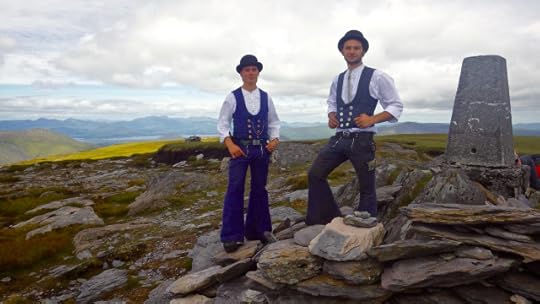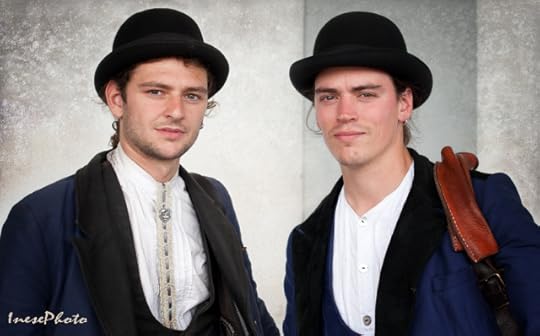Jean Reinhardt's Blog, page 28
November 3, 2016
Independent motion – can you help?
What a remarkable young man and such an inspiration.
 What would you give to make a dream come true if you woke to find yourself living a nightmare?
What would you give to make a dream come true if you woke to find yourself living a nightmare?
What would you feel if you could never again walk on a beach? Or go out alone in the snow…feel the stillness of a wood or cross a field?
And then, you found a way…
In 2009, my son was a successful young man with a bright future… until he was stabbed through the brain in an unprovoked attack and left for dead in an alley.
He was found almost immediately by passers-by who saved his life. By the time we arrived at the hospital, Nick was being prepared for emergency brain surgery. We were allowed to see him, for a few minutes, to say goodbye. He was not expected to survive…
Over the past couple of years, many in the blogging community have come to know my son and know…
View original post 498 more words


Thursday Doors
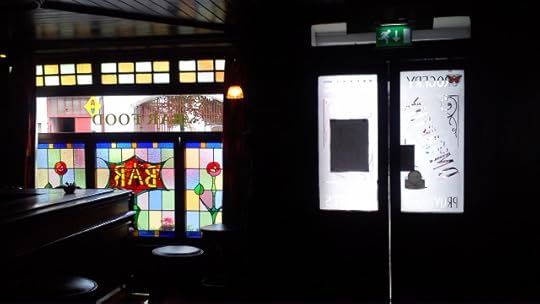
For a change, I’m on the inside of my Thursday Doors this week. McCarthy’s Bar is part of the Old Imperial Hotel, one of the oldest accommodation establishments in the historic town of Youghal, County Cork. The hotel was built in the 18th Century and was used as a stage coach stop on one of the Bianconi lines.
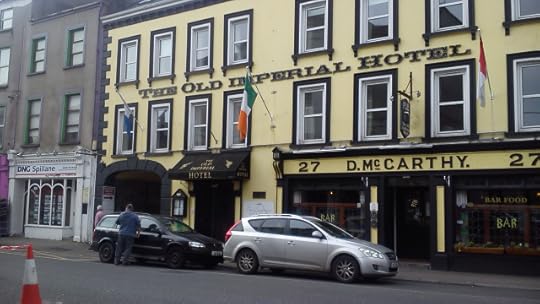
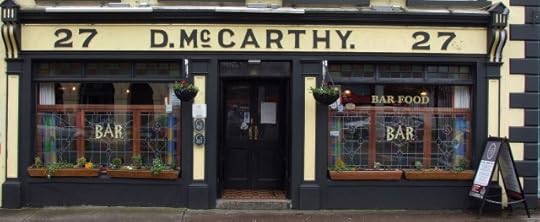
Carlo Bianconi was born in Tregolo, near Como in Italy, on September 24th. 1786. He was a wild youth, not very scholarly, so his father paid for him to be sent on an eighteen month apprenticeship to the art dealer Andrea Faroni. In 1801, along with three other young apprentices, Faroni and Bianconi crossed the French Alps and traversed France on foot, eventually arriving in Dublin in 1802. They were fortunate that their long journey was not in vain, as a fear of continental invasion, at the time, caused the British government to increase restrictions on the admission of foreigners.
They set up shop near what is now the Temple Bar area of Dublin and sixteen year old Bianconi continued to serve his apprenticeship as a street picture-seller. Every Monday his employer, Faroni, would send Carlo down south into rural Ireland with just four pence in his pocket, to cover his expenses until his return on Saturday. We know from the records that he was arrested in Passage East, Co Waterford and held in jail overnight, for selling pictures of Napoleon Bonaparte, Britain’s number one enemy at the time.
Carlo anglicized his name to Charles and in 1804, on the termination of his eighteen month apprenticeship, he decided not to return home but took to the road selling pictures and frames for himself, carrying his wares in a large box, strapped to his shoulders. He eventually settled in Tipperary, serving twice as mayor of Clonmel. He was a very enterprising man and became famous for his innovations in transport.
Bianconi was the founder of public transportation in Ireland, at a time preceding railways, and established regular horse-drawn carriage services on various routes from about 1815 onward. These were known as Bianconi Coaches and the first service, Clonmel to Cahir, took five to eight hours by boat but only two hours by Bianconi’s carriage. Travel on a Bian, as they were called, cost a penny farthing a mile and over the next 30 years a huge network of transport and communications was established, with Clonmel, Co Tipperary as its hub. In 1833 the Long Car went into production from Bianconi’s coach building premises in Clonmel, enabling him to carry up to twenty passengers, along with cargo and mail deliveries for both British and Irish Post Offices.
With the advent of railway in 1834 Bianconi realized that his coaching business had a limited future. He immediately began to buy shares in the different rail lines as they were being built and began selling off his coaches and long carts to his employees.
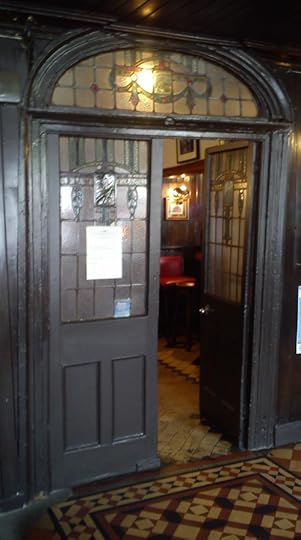
Inside McCarthy’s the doorway leading you from the bar to the bistro, with its traditional stained glass screens, is the original and about 200 years old. Bianconi himself might even have walked through them.





You can see the reflection of the entrance doors in the mirror over a beautiful old cast iron fireplace, which is lit every day in cold weather. I just love those tiles, too.






The wooden ceilings are gorgeous and the old tiled floor is just beautiful. In fact, I love everything about this place, especially the food. We had a full Irish breakfast after taking a long brisk walk on the beach.
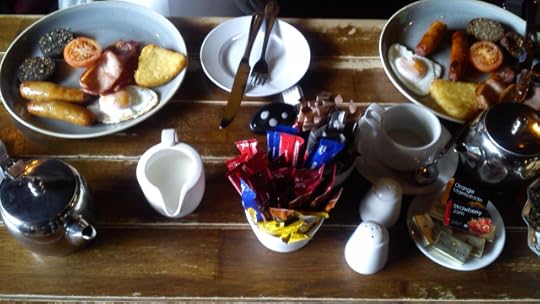
Thanks for stopping by to view my Thursday Doors this week, I hope that last image hasn’t left your mouth watering too much. There are lots more doors in various locations to see on Norm’s blog by clicking the blue ‘frog’ link at the end of his post. Feel free to add some doors of your own, anytime from Thursday to Saturday each week.
Charles Bianconi and the Transport Revolution
October 31, 2016
Sheelah Moloney 2020 Art Gallery
I just love this………..
‘Tryst’ by Jenny Monks 8th of October to 18th November 2016 at the 2020 Art Gallery Cork
Source: Sheelah Moloney 2020 Art Gallery


October 30, 2016
Histories in the Making – with David Lawlor
Great idea for those who want to bring their family history to life.
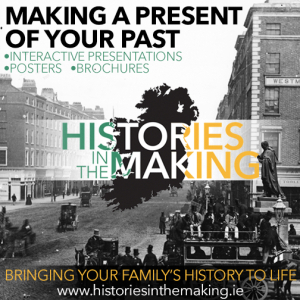 Wouldn’t you love to have a view of history personalized to your family? Well, listen up. Journalist, author and blogger David Lawlor talks about his new venture – bringing family history to life – and where the idea came from. Thanks for being here, David.
Wouldn’t you love to have a view of history personalized to your family? Well, listen up. Journalist, author and blogger David Lawlor talks about his new venture – bringing family history to life – and where the idea came from. Thanks for being here, David.
Histories in the Making – by David Lawlor
There are two routes I used to take to my office when I left the train station to go to work. They both passed a large 18th century building of Palladian, neoclassical design, which I used to admire as a child, long before I knew of its connection to my own family.
Now, as I pass it by, I study its pillars and façade for signs of bullet holes and shrapnel scars, and I imagine the men who died there.
I can almost hear the crack of gunfire, the screams of anger, pain, defiance, and the…
View original post 891 more words


October 27, 2016
Thursday Doors
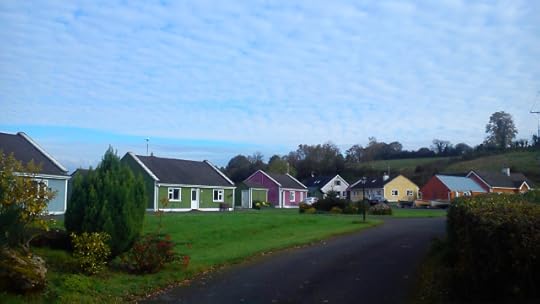
Last week I had no access to WiFi to participate in Thursday Doors but I had lots of opportunities to collect some interesting photos for this week’s post. These lovely little cottages (some not so little) are a delight to stay in, situated near Redhills, county Cavan. Ours was the yellow one with a lovely view of the lake and its visiting herons and swans.




The afternoon we took the boat upriver was the warmest and sunniest day of the week. We had never been on this part of the waterway before and as it was midweek and out of holiday season we seemed to have the river all to ourselves. Well, almost . . . . . . .
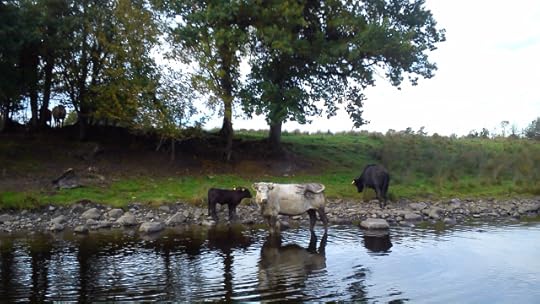
Of course there was the odd swan, enjoying the still water and sunshine, and some horses quenching their thirst just like the cattle. Sorry about the quality but I had to zoom in on my phone to capture the swan.
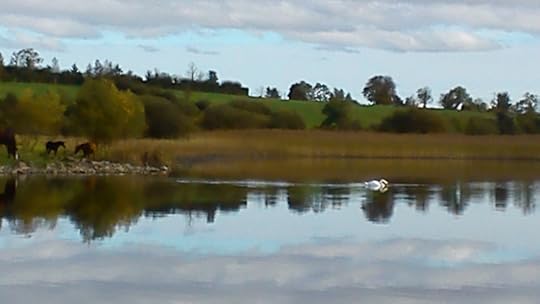
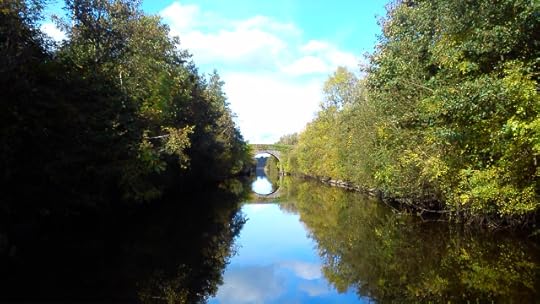
We docked at Crom Estate, county Fermanagh (Northern Ireland), the historic seat of the Earls of Erne for over 350 years. It’s a 1,350 acre nature reserve, owned and managed by the UK’s National Trust.
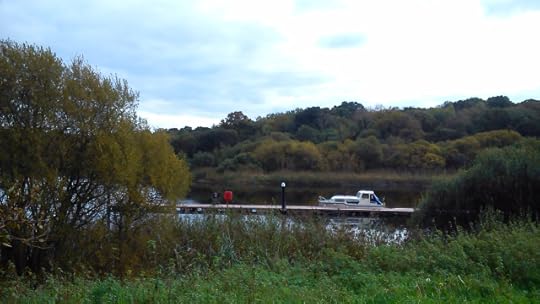
Of course, with my timing, the visitor center was closed but there was plenty to see on our way to the historical ruins of the original Crom Castle – such as the estate’s coachhouse and courtyard. These have been converted to self-catering accommodation in this wonderful scenic, tranquil setting. The slide show will be a treat for all you blue-door lovers.
Click to view slideshow.
It was a bit of a walk to get to the ruins but the landscape was beautiful and it was well worth the hike.
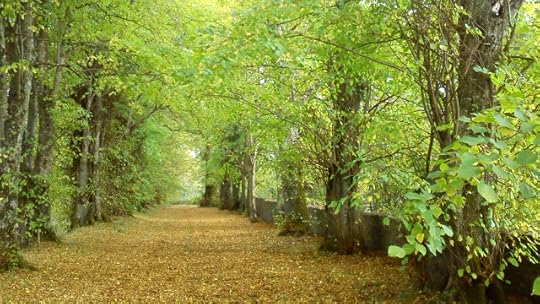
To the right of the tower in the image below you’ll see an old yew tree spread out and looking more like a shrub.
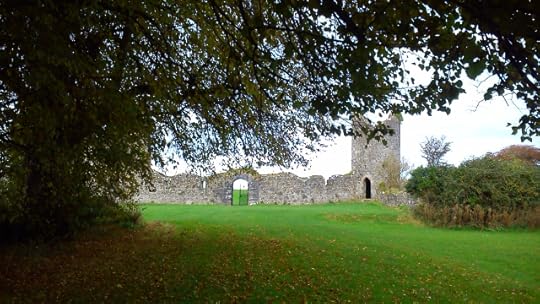
Inside the foliage you’ll find the tangled branches of a conjoined pair of a male and female English yew, with a combined circumference of 377ft (115m) and a diameter of 115ft (35m). The larger, older female yew is of a considerable age, reputed to be over 800 years old. The male tree is much younger and is thought to have been planted in the 19th century. The earliest known reference to the tree is from 1739, when it was described as an already venerable old tree.
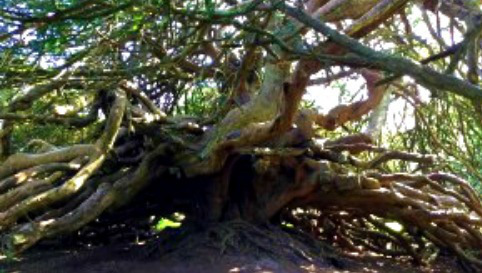
In the 19th century, additional walls and towers were added to the ruins of the old castle to give a more romantic effect. Here’s a slide show of what we saw when we got there. No words needed to describe it.
Click to view slideshow.
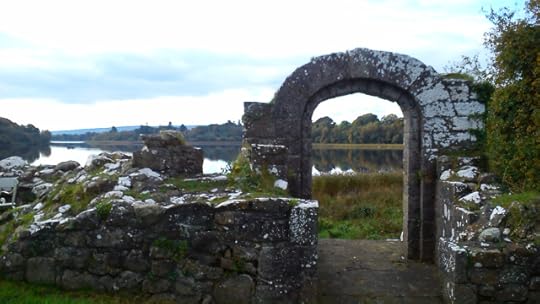
These are the ruins of the original castle at Crom, built by Michael Balfour in 1611, of lime and stone and enclosed within a bawn (a defensive wall surrounding an Irish tower house). The castle and the estate passed to the Crichton family in 1655 when Abraham Crichton married the daughter of the previous tenant, the Bishop of Clogher. Having survived two Jacobite sieges, it was destroyed by an accidental fire in 1764. According to tradition, when Abraham Crichton (a descendant and namesake of the first Abraham) was returning in his boat from a housewarming party at Florence Court, he saw a worrying glow in the sky to the south and arrived home to find his castle gutted. In 1840 a new neo-Tudor Crom Castle was built, designed by Scottish architect Edward Blore. It remains the property of the Earl of Erne and is not open to the public (except for the West Wing), so we didn’t trek across the fields to look at it or take any photographs. However you can see it for yourself at this link: Crom Castle Virtual Tour
For anyone who would like a fishing holiday, with a tour guide who speaks English and French and knows where the best places to fish are, Clonandra Cottages, Redhills is the place to stay. Boat hire and canoeing and kayaking are also available in the area, too.
Many thanks for stopping by and if you would like to enjoy an international selection of Thursday Doors, why not pay a visit to Norm’s blog and see what’s on offer this week.


October 23, 2016
Fresh and Salty


Fresh and Salty
I’m sorry there was no Thursday Doors post this week as I was away for a few days, with no access to the internet. However, I did take lots of interesting photos of doors and castles to post over the next few weeks. We rented a lovely cottage by a lake in county Cavan and spent some time there with our children and grandchildren. Ireland is not only surrounded by the sea on its coastline but has an abundance of inland rivers and lakes. Here are some photos of both fresh and salty bodies of water that I have the privilege and good fortune to enjoy on a regular basis.
Youghal Strand, County Cork
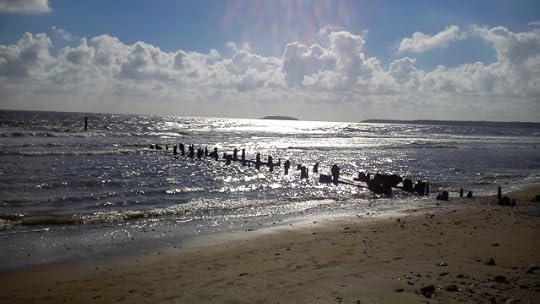
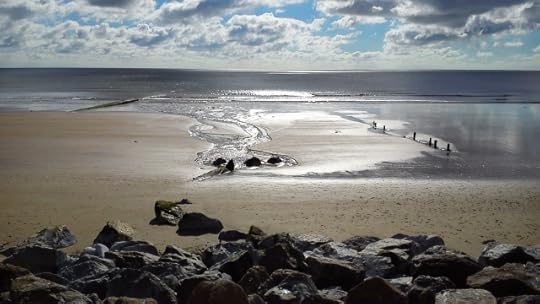
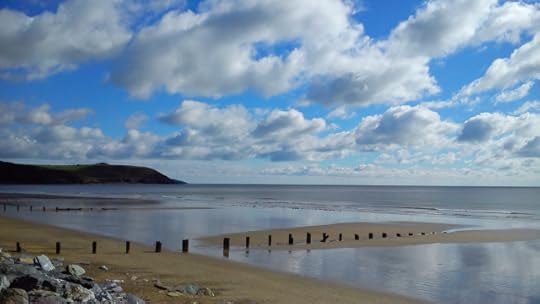
Cruising on the River Erne, County Cavan
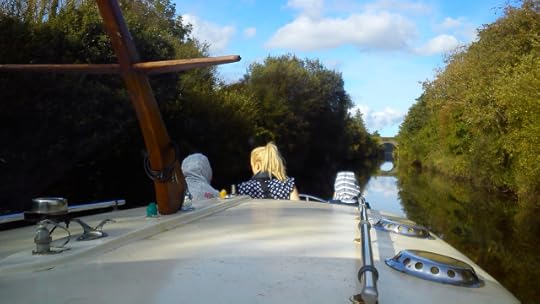
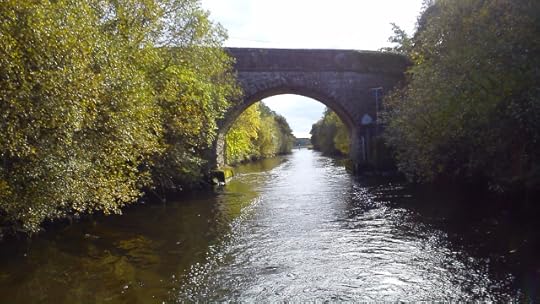

Hope to see you next week for Thursday Doors, featuring a ruined castle, autumn woodland and some thirsty cattle.
October 15, 2016
‘Auf der Walz’ – The Journeymen
Here’s an update on two young journeymen blacksmiths on their travels around Ireland that I reblogged about last July. Wait till you see the fabulous gates they made in West Cork.
I am always happy to find longstanding customs and traditions still going strong, especially when they are as relevant today as they have been over countless generations. This summer we chanced upon two strangers from Germany who passed through Ballydehob. They were journeymen blacksmiths: lads who had completed their apprenticeships at home and were now ‘Auf der Walz’ (on the road) – gaining experience in the wider world.
Here are the two Journeymen who travelled the west of Ireland’captured’ by photographer Inese MJ – she came across them in her local supermarket! I am very grateful to Inese for allowing me to use her excellent photograph which comes from her own blog, here.
The tradition of the Journeyman Brotherhood is centuries old, originating in the Craftsmen Guilds of Europe during the Middle Ages and it is still practiced. In the past every young craftsperson who aspired to be a Master was, following…
View original post 762 more words










